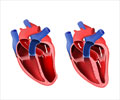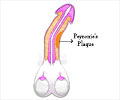- The efficacy and safety of valsartan compared with placebo in the treatment of patients with essential hypertension - (https://pubmed.ncbi.nlm.nih.gov/8930424/ )
- Verapamil - (https://www.ncbi.nlm.nih.gov/books/NBK538495/ )
- Verapamil and Alzheimer’s Disease: Past, Present, and Future - (https://www.ncbi.nlm.nih.gov/pmc/articles/PMC7214748/ )
- Verapamil - (https://medlineplus.gov/druginfo/meds/a684030.html )
- Verapamil : Interaction with Food, Herbs and Alcohol - (https://www.medindia.net/drugs/drug-food-interactions/verapamil.htm )
Information about Verapamil
Generic Name : VerapamilUp-to-date prescription details regarding Verapamil are provided here.
Pronunciation : ver-AP-a-mil
Learn the correct pronunciation of the Verapamil, understand it's uses, recommended dosages, its indications, how to take, when to take, when not to take, side effects, special precautions, warnings and its and its storage instructions.You will also find a list of the medication's International and Indian brand or trade names, as well as its pricing information. For verification of the information presented on this page or for additional clarifications, it's advisable to consult your doctor.
ICD Code : Y52.1 Therapeutic Classification : Calcium Channel Blockers
Trade Names/Brand Names of Verapamil
India :
International :
Calan, Calan SR, Covera-HS, Isoptin SR, Verelan, Verelan PM, Isoptin, Isoptin I.V.
Why is Verapamil Prescribed? (Indications)
This medication is a calcium channel blocker, prescribed for high blood pressure, chest pain, abnormal heart rhythm, and headache. It works by relaxing the blood vessels.When should Verapamil not be taken? (Contraindications)
Contraindicated in patients with low blood pressure, heart disease, and hypersensitivity.What is the dosage of Verapamil?
Adult- PO- The recommended dose range is 120-480 mg/day in 3-4 divided doses.How should Verapamil be taken?
It comes as a tablet to take by mouth, with food.What are the warnings and precautions for Verapamil?
• Caution should be exercised in patients with history of low blood pressure, heart, kidney or liver problems, muscular dystrophy, neuromuscular disease, cancer, any allergy, who are taking other medications, during pregnancy and breastfeeding.• It may cause dizziness, do not drive a car or operate machinery and get up slowly from bed while taking this medication.
• Avoid alcohol consumption.
• Monitor liver function, kidney function, complete blood cell counts, electrocardiogram (ECG), and blood pressure regularly while taking this medication.
• It should not be used in children.
What are the side effects of Verapamil?
Most Common - Constipation, headache, upper respiratory infection, dizziness, fatigue, swelling in the extremities, nausea, elevated liver enzymes, slow heart rate, tingling, flushing and low blood pressure.Heart - Chest pain, heart failure, lung swelling, heart attack, palpitations, bruising and fainting.
Gastrointestinal - Diarrhea, dry mouth, gastrointestinal distress and gum swelling.
Blood - Bruising.
Central Nervous system - Stroke, confusion, sleeplessness, muscle cramps, shakiness and drowsiness.
Musculoskeletal - Joint pain.
Skin - Rash, exanthema, hair loss, increased sweating, hives and redness of the skin.
Eye - Blurred vision and ringing in the ear.
Genitourinary - Increased urination, spotty menstruation, impotence and breast enlargement in male.
Miscellaneous - Allergy aggravation and difficulty in breathing.
What are the other precautions for Verapamil?
Avoid excess dosage.What are the storage conditions for Verapamil?
Store it at room temperature.Schedule : H
Prescription drugs - Drugs to be sold only under the prescription of a Registered Medical Practitioner.

















